I'm not sure I ever would have thought to go to Chile on my own. But Mrs. F had been in Santiago a couple years ago for something work-related, and came back raving about the bustling, cosmopolitan city surrounded by the Andes mountains. After doing some homework, I found plenty to get excited about too. We plotted a week-long trip when we'd have all the family together: a day on the Pacific coast in Valparaiso, a quick tour through Casablanca Valley wine country, a couple days in Santiago, wrapping up with a stay in the Atacama desert toward the north.
You probably know by now that the food usually plays a not-inconsequential role in my choice of travel destinations. But I didn't know much at all about Chilean cuisine. In fact, to be honest, I'd only heard of one restaurant in the entire country: Rodolfo Guzman's Boragó, a high-end tasting-menu place that has drawn the attention of the International Dining Mafia. Needless to say, this was entirely a function of my own ignorance: what I found was a country with a rich, complex and delicious culinary culture fueled by the incredible bounty of seafood from its extensive coast and a combination of pre-Columbian and colonial ingredients and influences, with a sense of history and tradition as well as creativity and playfulness.
Our red-eye flight to Santiago arrived around 6 a.m., and we'd arranged for a driver to take us to Valparaiso, about 1 ½ hours due west on the coast. About a half hour in, our driver Gustavo realized we needed a little sustenance. Near the town of Casablanca, he pulled into Caféteria Don Floro, a small, open-air roadside restaurant. Each of the formica booths was set with a plate of hard-boiled eggs and canisters of instant coffee. We peeled and salted eggs and sipped Nescafé café con leches as some pan hallulla, a dense, chewy, round bread, was toasted over a charcoal brazier near our feet.
The menu at Don Floro was comprised almost entirely of sandwiches – Chileans, it seems, eat sandwiches for breakfast, lunch and dinner – so we shared one stuffed with "arrollado de campo," a roll of pork bits wrapped in its skin, and another with "queso fresco de vaca soltero," fresh cheese made from the milk of a single cow. I'm not sure this place was any better or worse than any other roadside stand along the way between Santiago and Valparaiso, but Gustavo clearly had an opinion on such matters, as he drove by several other places before stopping here, and our breakfast validated his judgment. We were groggy, and hungry, and this really hit the spot.
(A few more pictures in this Caféteria Don Floro flickr set).
Appropriately fortified, we made it to Valparaiso without incident, where we checked into the Fauna Hotel, a clean-lined, modern property which is actually a refurbishment of two old buildings that date back to the 1870's.[1] The hotel was both stylish and comfortable, and its setting offered a fantastic vantage point (the picture at the top of this post was taken from the window of our room), while also being centrally located for exploring the town. Valparaiso is a city of hills, and the Fauna sits atop of one of them – Cerro Alegre – across from a funicular station at its summit, at the end of a pedestrians-only street.
(Some more pictures in this Fauna Hotel flickr set).
Fauna Hotel
Pasaje Dimalow #166, Cerro Alegre, Valparaiso, Chile
+56 32 3270719
Like Cartagena, Colombia, which we visited earlier this year, Valparaiso's historic quarter has been designated a UNESCO World Heritage Site. And it's easy to see why: the twisting streets, steep hills, and colorful buildings (many of which date back to the 19th century), all overlooking the Pacific ocean, are incredibly picturesque and charming, and also a great example of urban adaptation to a tricky geography. But what was truly fascinating to me about the town was the confluence of the historical and the contemporary. It is no exaggeration to say that virtually every available surface of the city is covered in street art; some of it amateurish, but the bulk of it really skilled and much of it quite beautiful. What at first blush as we drove into town seemed signs of urban blight were actually just the opposite.[2]
We spent the day just wandering around town, up and down the hills, seeing colorful buildings and murals everywhere, occasionally catching a glimpse of the ocean. Often, we were accompanied by one of the friendly dogs that roam the streets throughout Chile.[3] A visit to the Palacio Baburizza, the 1916 Italian-style mansion of a Croatian businessman which has been made into a museum, was a nice little pit-stop. We had lunch at Café Vinilo, whose modest exterior belied a surprisingly ambitious menu including some excellent crab empanadas, a rockfish ceviche spiked with fresh ginger and mint, and an open-faced sandwich topped with creamy blood sausage and a fried egg.
(Some more pictures from around the city are in this Valparaiso, Chile flickr set).
(continued ...)
For dinner, we made our way to Café Turri, where we ate on an outdoor patio overlooking the Pacific and the glimmering lights up the coast. Turri feels, well, just a little bit touristy, but the menu (in the form of a newspaper, which also details all the goings-on in town for the month) features lots of local seafood and is stocked with at least as many Chilean specialties as generically "international" dishes.
In my advance scouting, I saw "machas a la parmesana" on Chilean menus everywhere, and figured we had to order it at least once. And I can see the appeal: what's not to like about razor clams[4] blanketed in a layer of warm, melted parmesan cheese?
"Locos con Mayonesa" is another item we saw often in Chile. "Loco" is translated as abalone, though according to Wikipedia, it's actually a different species of gastropod mollusk native to the coasts of Chile and Peru.[5] They were invariably served one of two ways: either cold with mayonnaise, or in a "chupe "(stew). As with true abalone, some preparations yield a result that is firm and chewy, sweet and faintly marine; and others are like eating pencil erasers. This was of the former variety, and was the best example we sampled during the trip – steamed and served cold with both a creamy mayo and an herb-flecked salsa verde.
Congrio – conger eel – is another ingredient that is ubiquitous in Chile. And indeed, it is so beloved that the famous Chilean poet, Pablo Neruda, wrote an ode to conger eel stew (you can read it in Spanish or English, if you choose – either way, it may be the most voluptuous recipe ever written). It was served a few different ways at Café Turri, including, here, the gelatinous cheeks done in a Basque-style "pil pil" sauce, with toasted garlic, slivered chiles and lots of olive oil. We washed it all down with a Matetic Coralillo Sauvignon Blanc, and maybe it was just the power of suggestion, but our waiter's comment that its floral, citrusy qualities evoked maracuya (passion fruit) seemed spot-on.
(More pictures in this Café Turri - Valparaiso, Chile flickr set).
Café Turri
Templeman #147, Cerro Concepcion, Valparaiso, Chile
+56 32 2252091
The next morning, after breakfast at the Fauna, whose glass-walled restaurant sits like an aerie at the top of the building, Gustavo was ready to take us on a quick tour through wine country on the way back to Santiago. But first, a visit to one of Pablo Neruda's homes – La Sebastiana, up in the hills of Valparaiso.
Neruda kept several houses – in Santiago, in Valparaiso, and down the coast at Isla Negra – seemingly, one for each wife and mistress. They have each been converted into museums, which preserve the houses largely as Neruda kept them.
Often these kinds of museums are kind of pointless, doing little to capture the character of the person who lived there. But La Sebastiana is an exception: though the poet passed away more than forty years ago, it still feels as if he lives and breathes in this place.
From the dining room table set with brightly colored glass goblets and a huge cow-shaped tureen, which he used for serving punch, to the crow's nest of a study at the top of the house filled with maps and nautical paintings, the house is romantic, sensuous, and whimsical, just like its creator. You can easily imagine what it was like to be here as Neruda threw one of his frequent dinner parties. Unfortunately, they do not allow photos of the interior; so you'll just have to trust me that it's well worth a few minutes' detour.
(A few more pictures of the grounds and the views in this La Sebastiana flickr set).
Our first stop was at Viñamar de Casbalanca, a producer which to the best of my knowledge doesn't currently export any wine into the United States. Judging by their sizable, ornately decorated winery, it would seem they're doing plenty enough sales in-county. They produce a full range of wines, but I was most intrigued to try their sparkling wines, something I didn't even know was made in Chile. We tasted their Brut, which adds touches of Sauvignon Blanc and Semillon to the predominantly Pinot Noir / Chardonnay blend; the drier, crisper, more classical "Brut Unique;" a really lovely Rosé; and a taut, focused Extra Brut. I'm not sure what the pricing is like, but assuming they're fairly reasonable, I would happily drink any of these regularly.
Viñamar de Casablanca
Camino Interior Nuevo Mundo S/N
Ruta 68, Km 72, Casablanca
+56 32 2754300
From there, we headed to Viña Indómita, a relatively new winery with a possibly even more ostentatious facility just up the next hill. We tasted a sampling of their "Duette" range of wines (Chardonnay, Pinot, and a Cab-Carménère blend), which appear to be a step up from their "Gran Reserva" line – priced in the U.S. in the $20 range, compared to the sub-$15 Gran Reservas.
These, alas, just ratified my pre-existing impression of Chilean wines: perfectly drinkable, eminently forgettable. But it sure was nice to relax outside on a couch with glass in hand, a view of the valley and the mountains behind it sprawling out before us; the topography of the Casablanca Valley is actually very reminiscent of California's Napa Valley. And if I had it to plan over again, I might arrange my schedule so as to arrive here at lunch time: the menu at the in-house restaurant ranged from conger eel in a locos salsa to stewed lamb with a charquicán vegetable stew.
(Some more pictures in this Casablanca Valley, Chile flickr set).
Viña Indómita
Ruta 68, Casablanca, Chile
+56 32 2153902
But instead, we were off to Santiago, where this travelogue will resume in the next post.
[1] Some more background on the construction and design of the Fauna Hotel here.
[2] We had read and been told that Valparaiso was prone to pick-pockets and muggings. I don't doubt it, and all it takes is one experience to completely change your perception, but there was nowhere we went where I felt uncomfortable or unsafe. We didn't stray very far from the main drags, and I think the further up the hills or down into the harbor area that you venture, the more likely you are to be targeted.
[3] One dog quickly made friends with Little Miss F and then followed us around town for a mile or two. Mrs. F named her "Mabel." The street dogs were not always very clean or in the best shape, but were consistently docile and friendly.
[4] These did not resemble the long, thin jack-knife shaped clams that I'm accustomed to seeing referred to as "razor clams," but were smaller than most Pacific razor clams I've seen.
[5] There's a lot of confusing seafood nomenclature to sort through in Chile. Aside from the "machas" which are translated as razor clams and which may not be razor clams, and the "locos" which are translated as abalones and are not true abalones, they also call swordfish "albacora" and translate "corvina" as "sea bass" – which I mistakenly thought meant it would be "Chilean sea bass" (you know, in France, "french fries" are just "frites"), but it's not, it's just corvina (which is indeed sea bass, a/k/a drum or croaker). Turns out Chilean sea bass (which is actually Patagonian toothfish) is apparently called "mero" in Chile.
[2] We had read and been told that Valparaiso was prone to pick-pockets and muggings. I don't doubt it, and all it takes is one experience to completely change your perception, but there was nowhere we went where I felt uncomfortable or unsafe. We didn't stray very far from the main drags, and I think the further up the hills or down into the harbor area that you venture, the more likely you are to be targeted.
[3] One dog quickly made friends with Little Miss F and then followed us around town for a mile or two. Mrs. F named her "Mabel." The street dogs were not always very clean or in the best shape, but were consistently docile and friendly.
[4] These did not resemble the long, thin jack-knife shaped clams that I'm accustomed to seeing referred to as "razor clams," but were smaller than most Pacific razor clams I've seen.
[5] There's a lot of confusing seafood nomenclature to sort through in Chile. Aside from the "machas" which are translated as razor clams and which may not be razor clams, and the "locos" which are translated as abalones and are not true abalones, they also call swordfish "albacora" and translate "corvina" as "sea bass" – which I mistakenly thought meant it would be "Chilean sea bass" (you know, in France, "french fries" are just "frites"), but it's not, it's just corvina (which is indeed sea bass, a/k/a drum or croaker). Turns out Chilean sea bass (which is actually Patagonian toothfish) is apparently called "mero" in Chile.

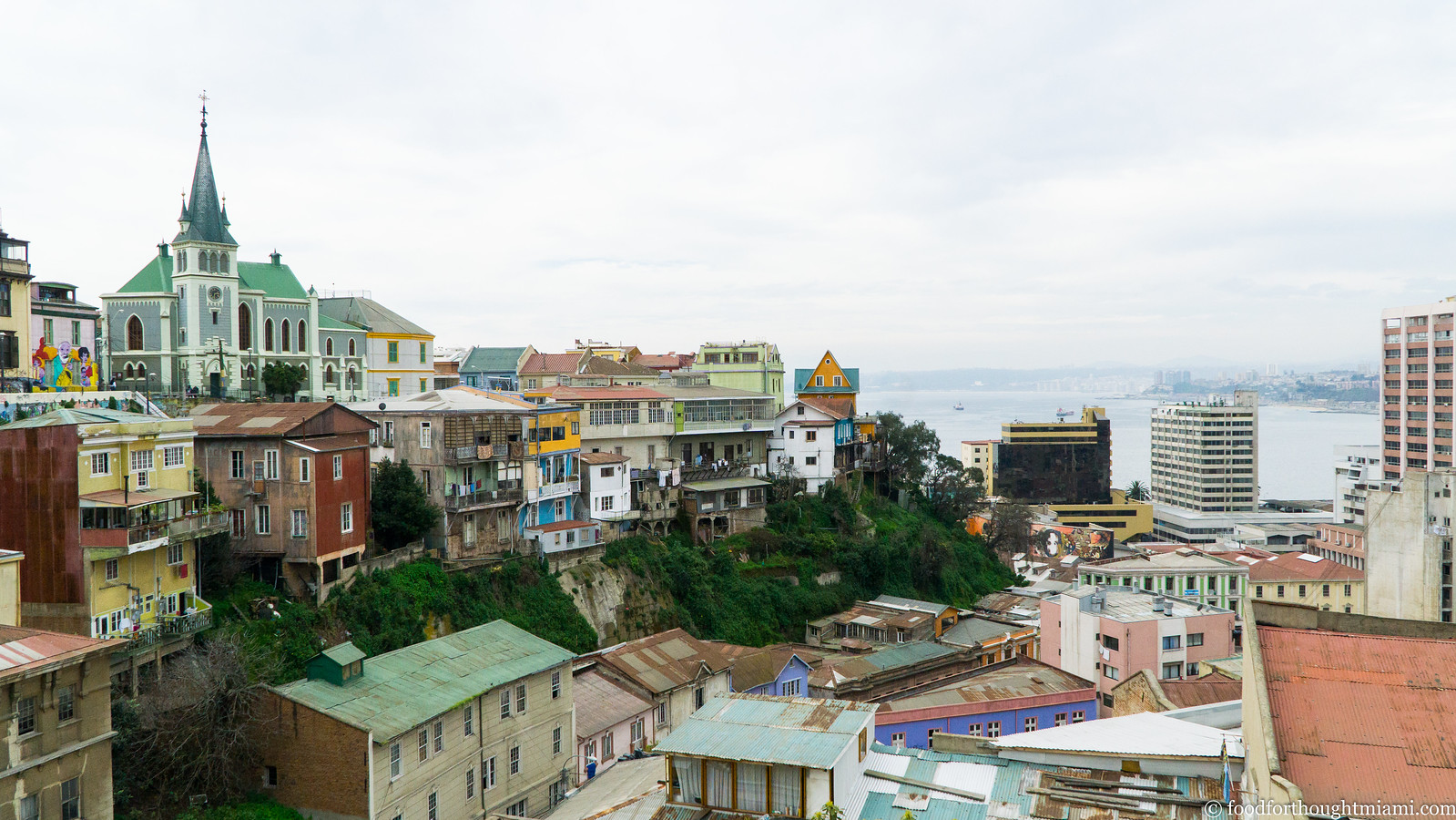
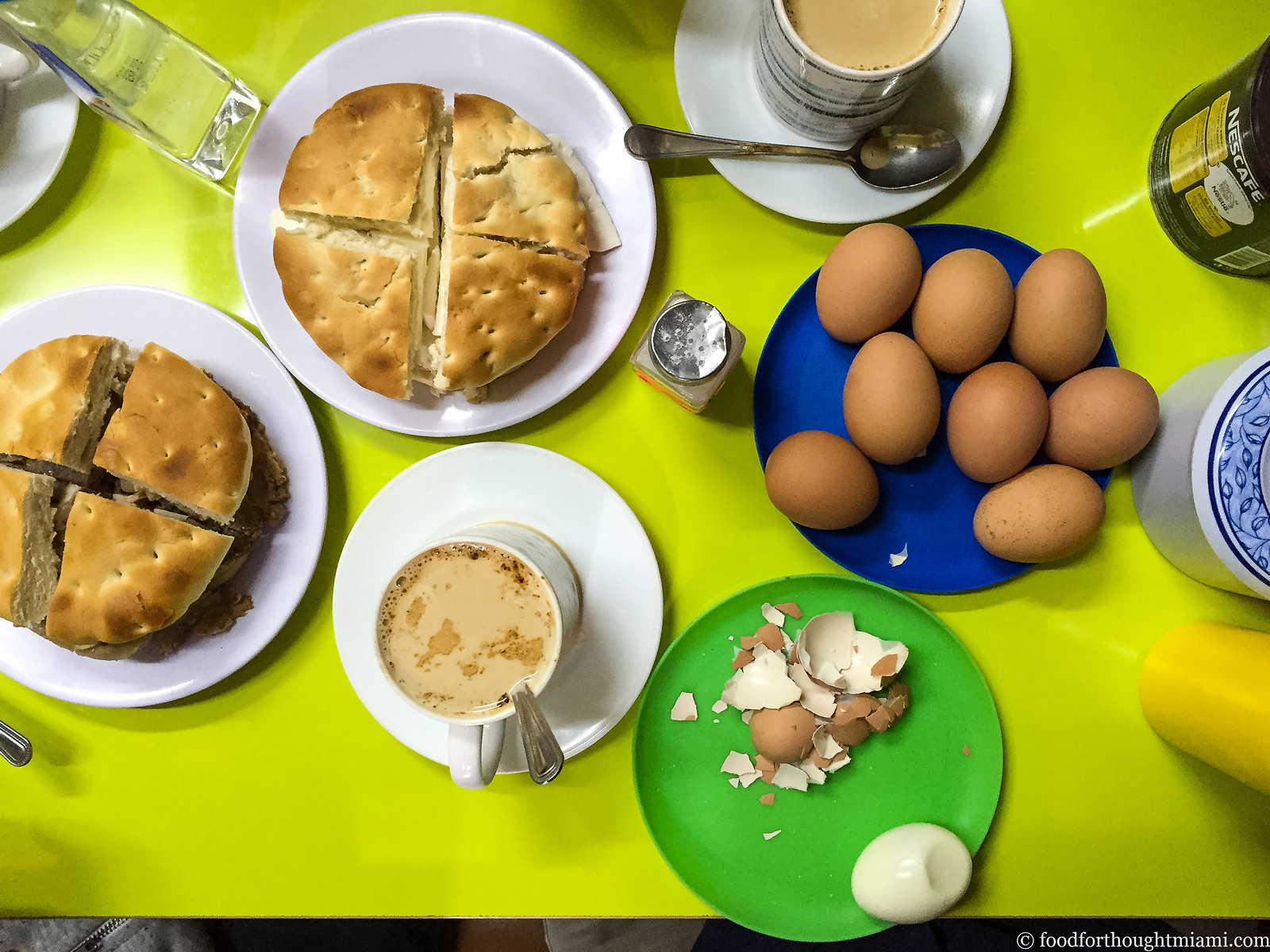
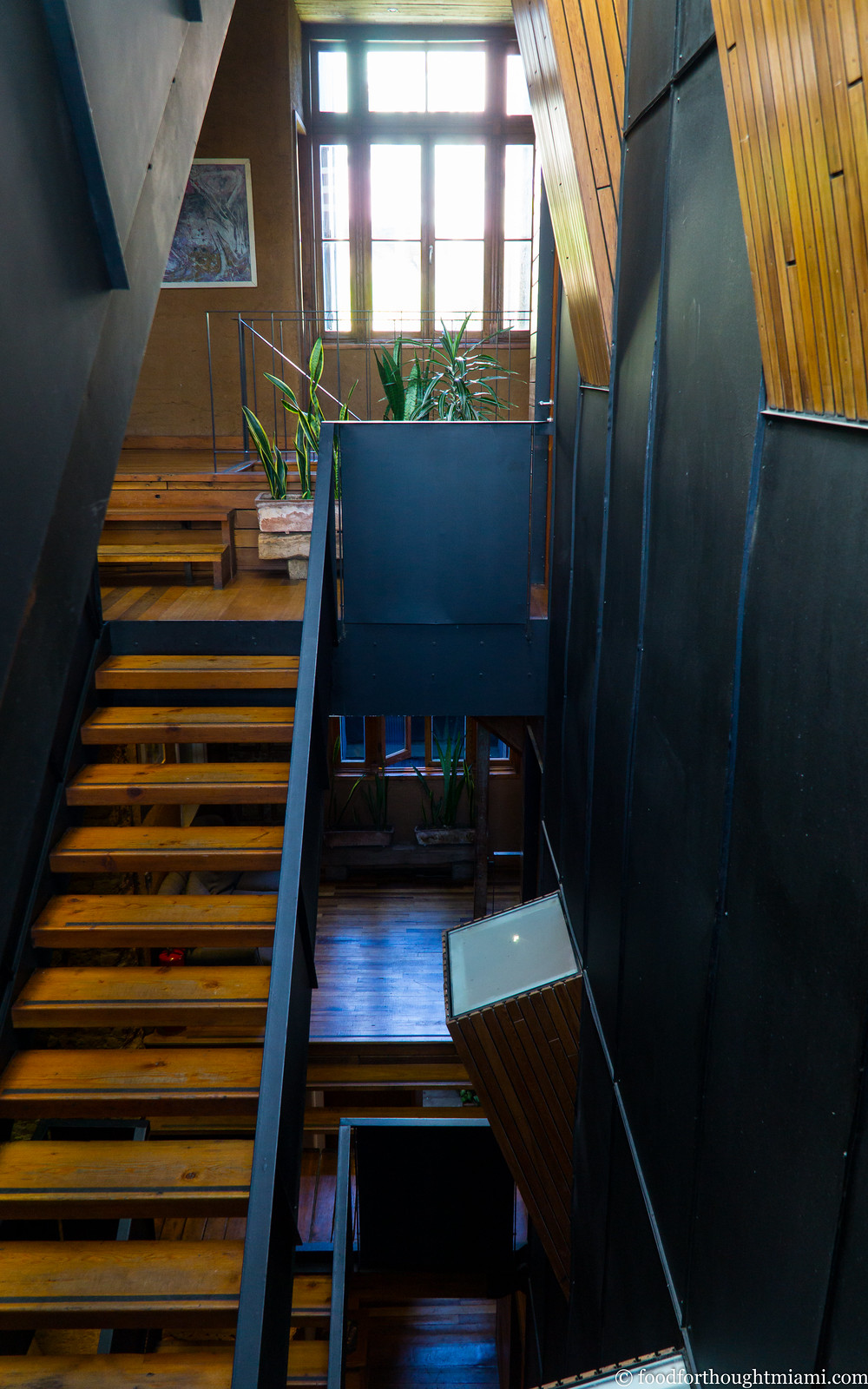
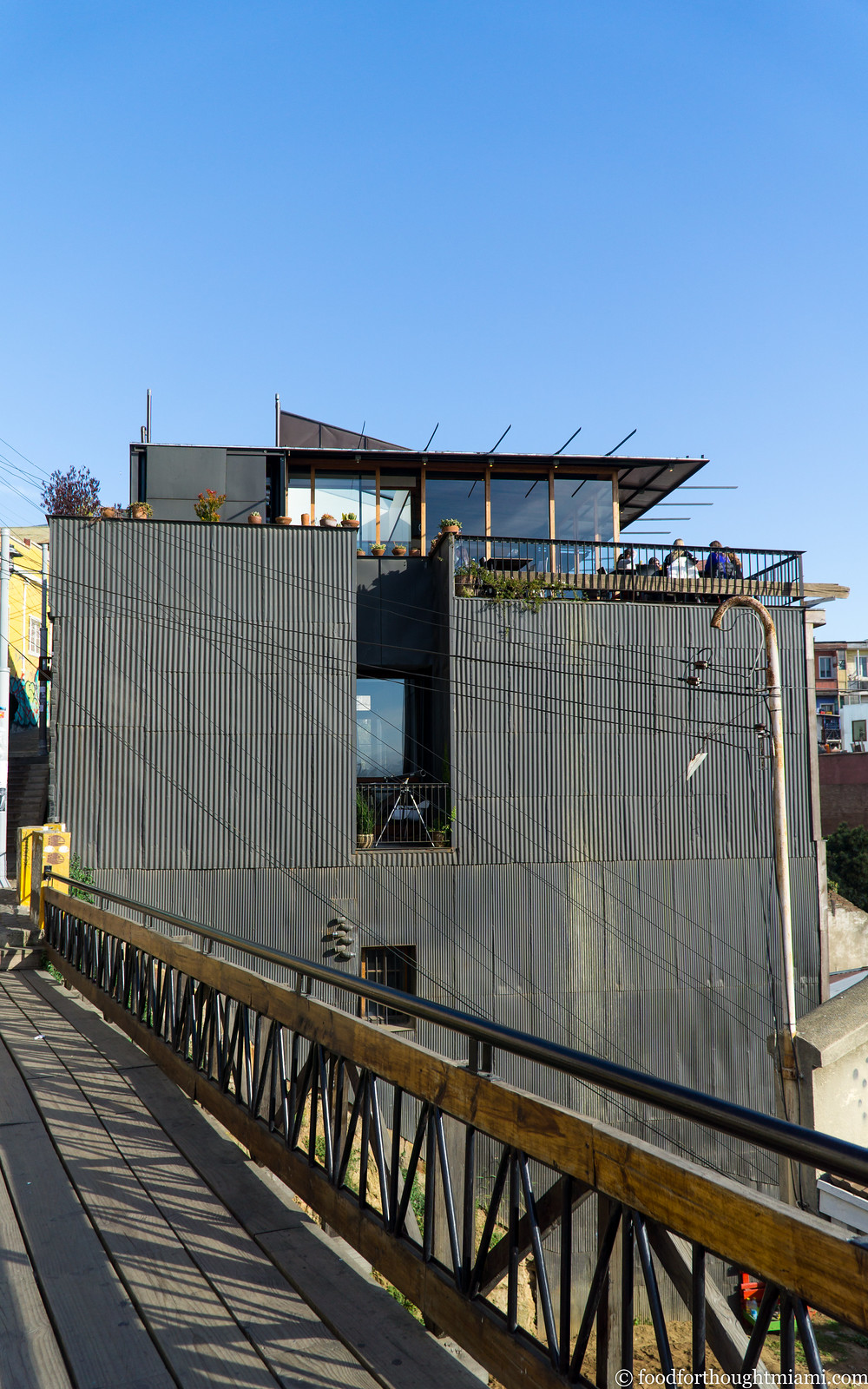
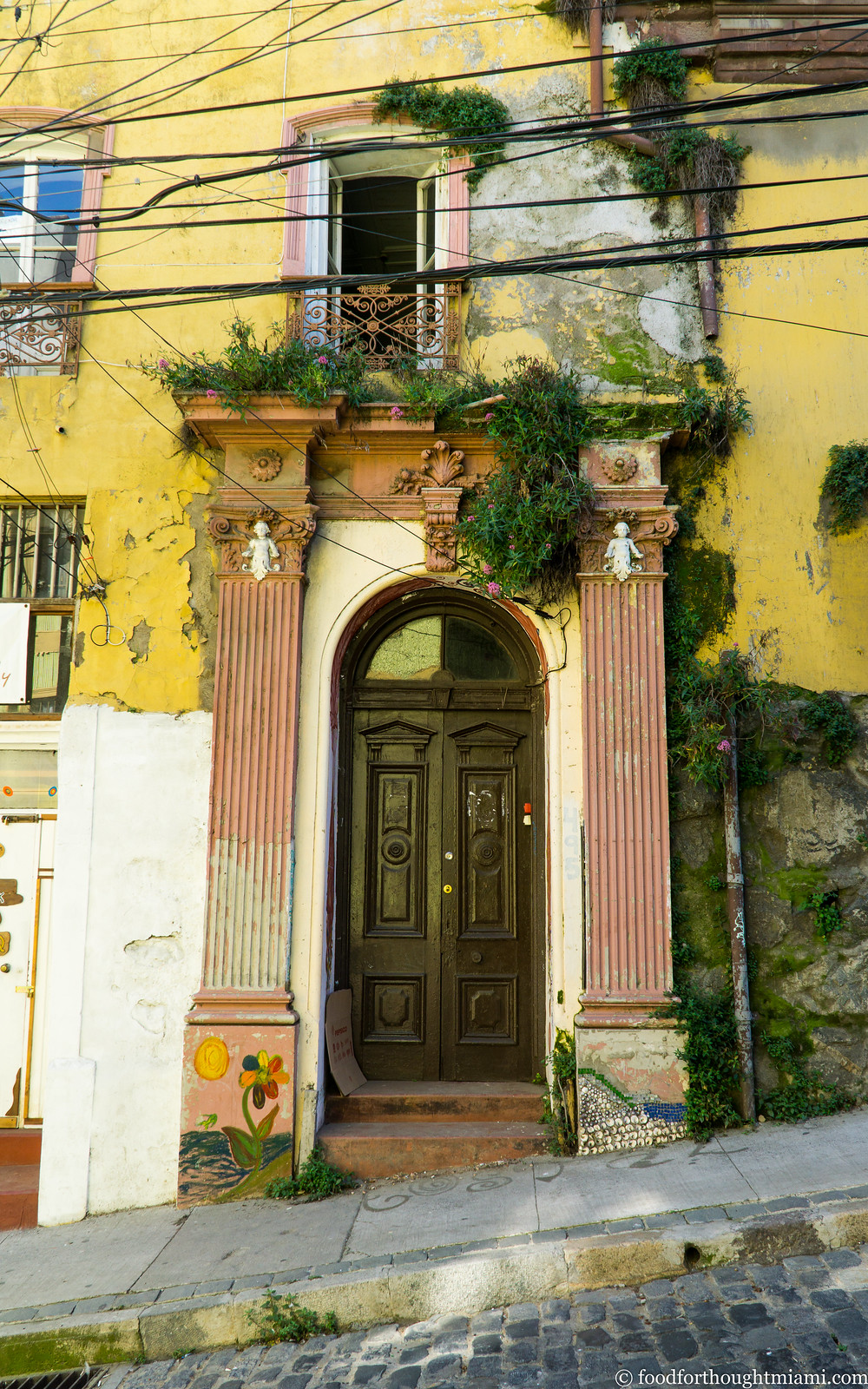

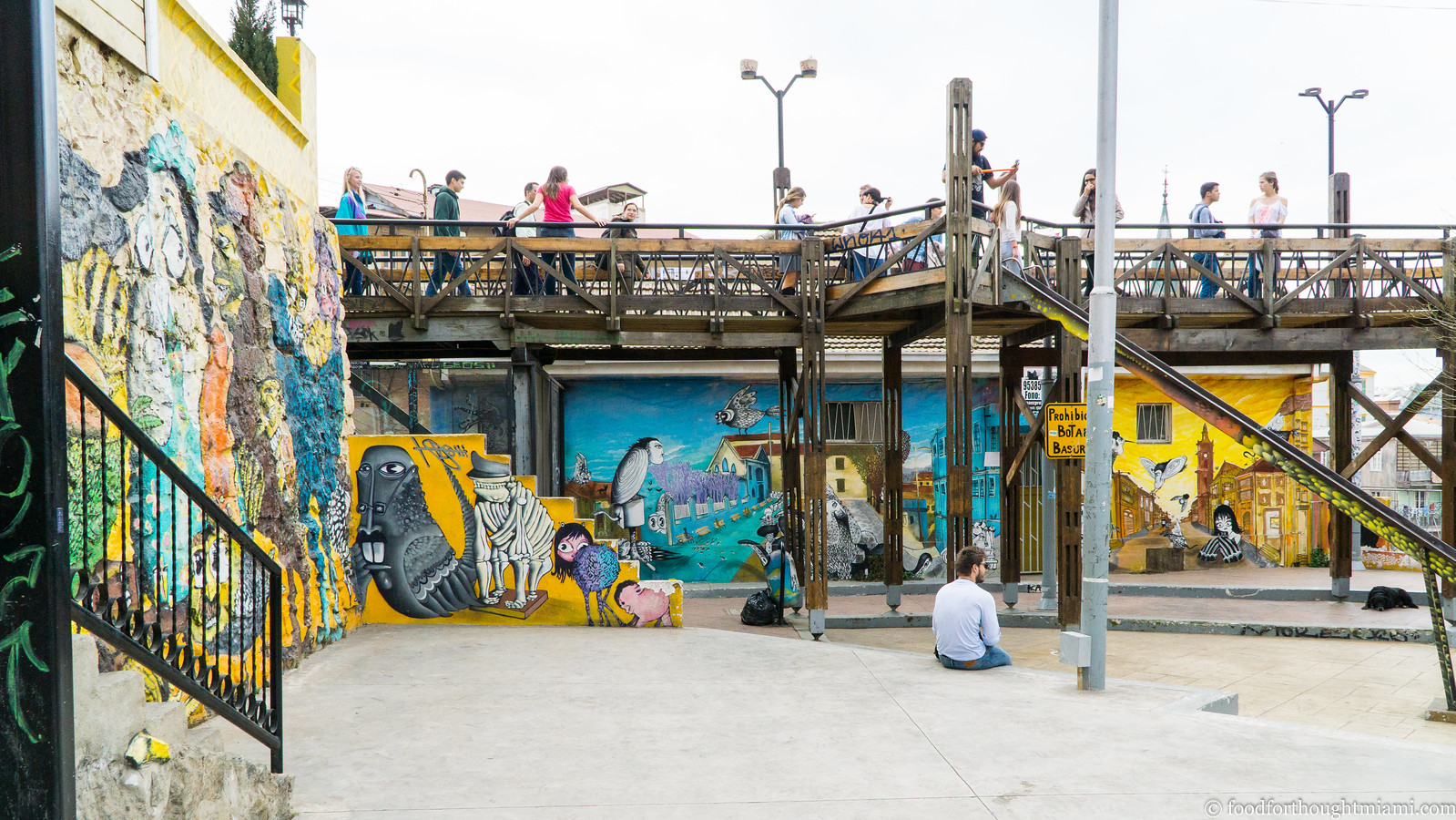



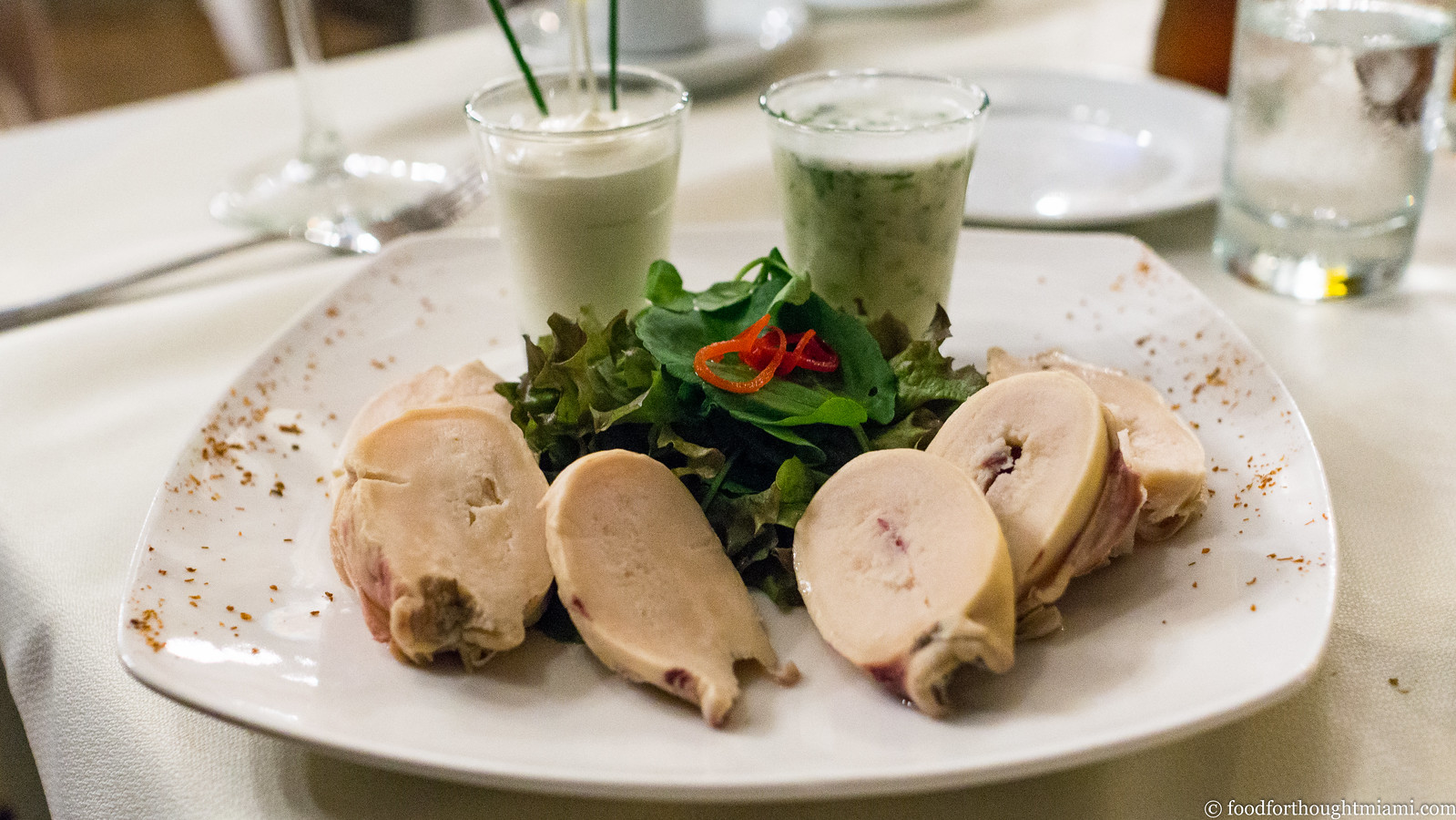

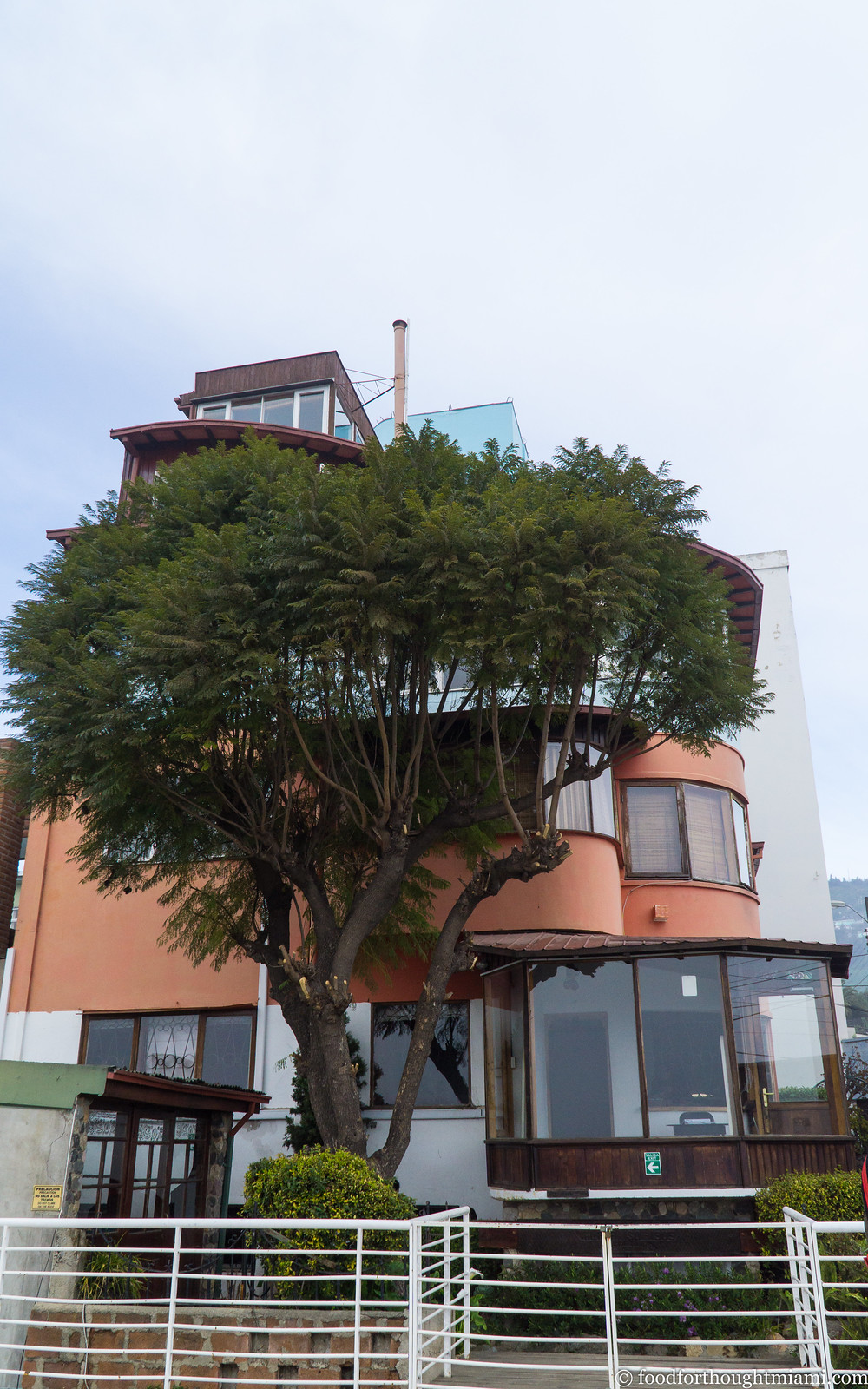



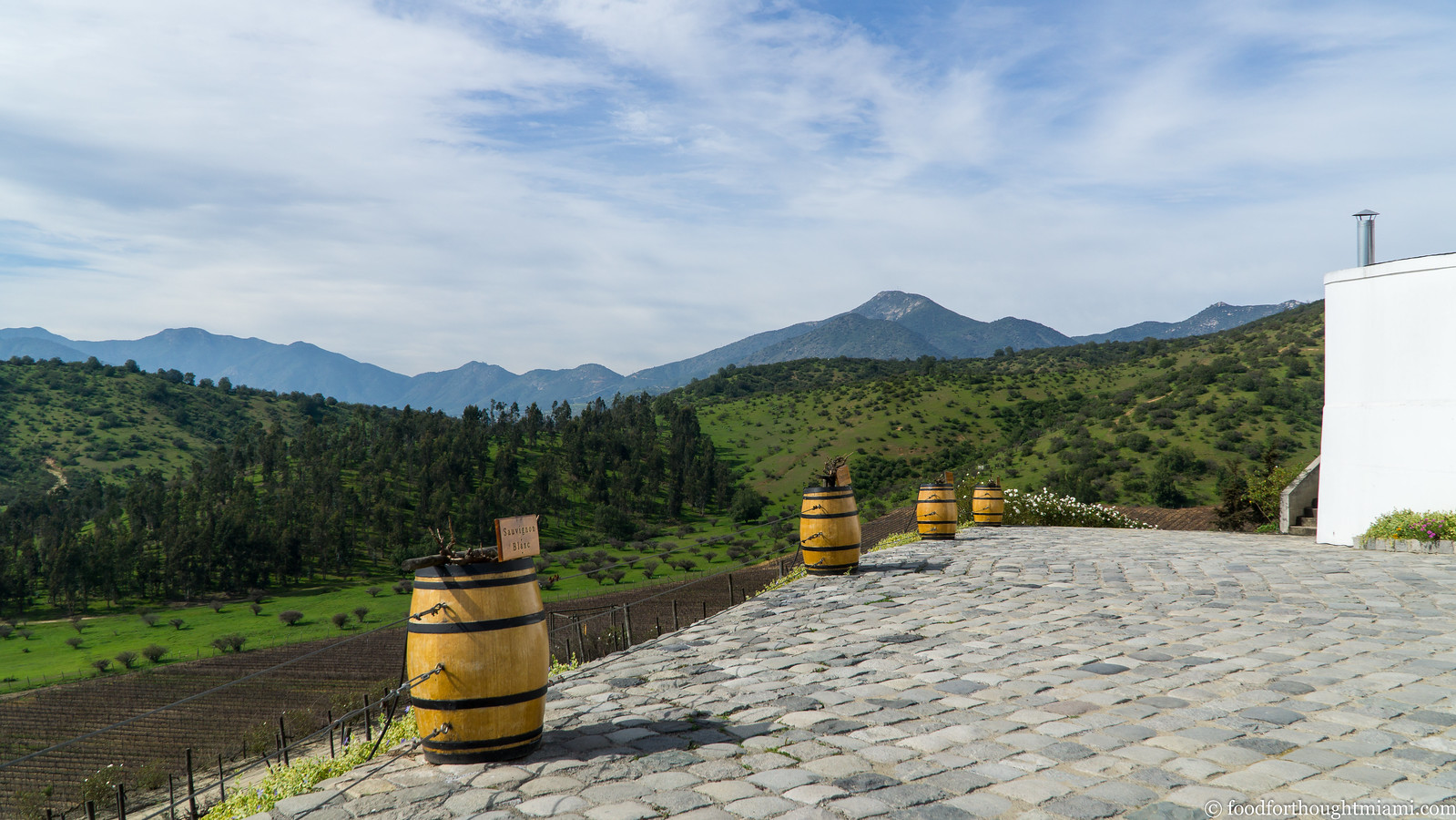
No comments:
Post a Comment